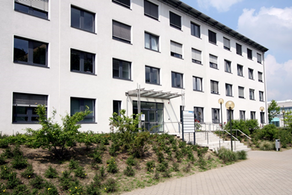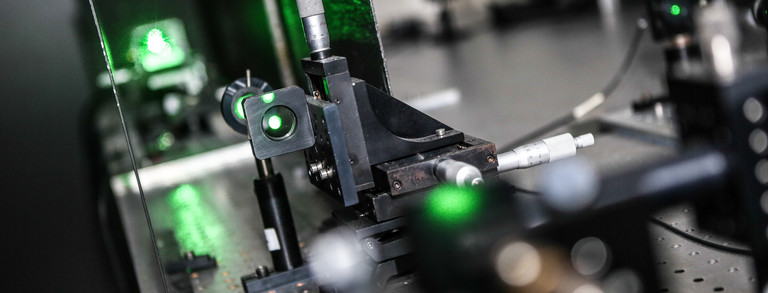Projects
Taking into account the band structure and charge carrier shielding, the basis should be created to develop or optimize efficient methods for the analysis of quantum devices. The aim is to study the high-frequency behavior. This includes the determination of current-voltage characteristics, the investigation of charge carrier transport, taking into account scattering mechanisms and the resulting frequency behavior. For this purpose, transient (time-dependent) algorithms have to be developed that model the high-frequency behavior of the quantum components. In this way, valuable information can also be obtained about the parasitic behavior, which leads to a well-founded HF characteristic.
(Further information on the analysis and modeling of quantum devices in THz technology and photonics)
The design of circuits in THz technology and photonics requires adapted design/simulation methods in analogy to integrated microwave circuits and integrated circuits in microelectronics. Lattice structures are of particular importance in photonics, for example. Grating structures are used in many different ways (including UV-induced fiber Bragg gratings, complex coupling gratings, superlattices in plasmonic circuits, coupling and decoupling filters in planar sensor circuits). Time domain methods allow a comprehensive analysis of this type of circuit. Methods are being developed that enable efficient simulation of wave propagation.
Today's optical transmission systems are increasingly reaching the theoretical limits of their transmission capacity. Higher modulation formats as well as wavelength and polarization multiplexing are used here. A further increase in transmission capacity can be achieved by using spatial multiplexing using different transverse field distributions (modes). In theory, the transmission capacity can be increased by the number of modes used for spatial multiplexing.
(Further information on ultra-high transmission capacity through space-division multiplexing)
In addition to higher-level modulation formats, modern optical transmission systems use wavelength and polarization multiplex to increase transmission capacity. The capacity can be further increased by using different transversal modes for transmission. For the development of usable systems, an exact modeling of the coupling effects occurring in the glass fiber between the different modes is necessary.
Software-defined networking (SDN) enables efficient and resource-saving network operation, so that the available capacity can be flexibly adapted to current needs. Dynamic operation can be implemented in the most energy-efficient manner by (physically) switching wavelength channels on and off. Level transients caused by erbium-doped fiber amplifiers (EDFA) can impair the performance of the other wavelength channels and prevent error-free transmission. It is therefore necessary to develop intelligent concepts for transient suppression.
(Further information on safe and flexible optical networks through intelligent transient suppression)
In order to increase the performance of photonic integrated filter structures, low loss waveguides are required. At the Chair of High Frequency Technology, these waveguides are manufactured using plasma-enhanced chemical vapor deposition (PECVD). In this case, hydrogen-containing gases are usually used, which lead to undesired hydrogen compounds, such as Si—H compounds, in the waveguide layer. The harmonics of these molecules absorb part of the C-band (1530-1565nm) optical signal power, resulting in an increase in waveguide attenuation.
(More information on investigation of deuterated planar optical waveguide materials)



